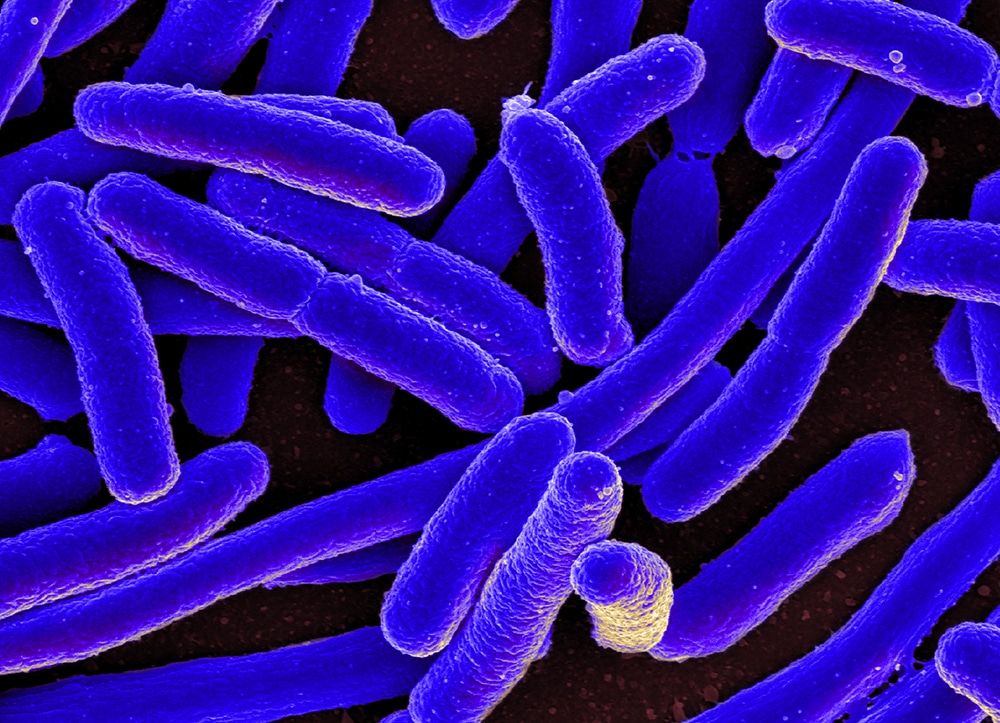A new study suggests that E. coli from meat products may be responsible for hundreds of thousands of urinary tract infections in the U.S. each year.
A team of scientists, led by Lance Price and Cindy Liu from the George Washington University Milken Institute School of Public Health, developed a new genomic approach for tracking the origins of E. coli infections. Using this method, the team estimated that between 480,000 and 640,000 urinary tract infections in the United States each year may be caused by foodborne E. coli strains.
“We’re used to the idea that foodborne E. coli can cause outbreaks of diarrhea, but the concept of foodborne E. coli causing urinary tract infections seems strange—that is, until you recognize that raw meat is often riddled with the E. coli strains that cause these infections,” said Price, a professor of environmental and occupational health and director of the GW Antibiotic Resistance Action Center who formerly was a researcher at Northern Arizona University. “Our study provides compelling evidence that dangerous E. coli strains are making their way from food animals to people through the food supply and making people sick—sometimes really sick.”

E. coli can live in and infect people and animals, including animals raised for meat in the U.S. When food animals are slaughtered, the bacteria that inhabit their guts—including E. coli—can contaminate the meat products and put people at risk for exposure.
Data from the U.S. Food and Drug Administration (FDA) suggests that a majority of raw meat products are contaminated with E. coli. Currently, only specific types of diarrhea-causing E. coli, such as E. coli O157:H7, are monitored with any seriousness in the U.S., but this new research suggests that other strains may also pose serious health risks.
In this study, the researchers collected raw chicken, turkey and pork purchased from major grocery store chains 
By analyzing the genomes of E. coli from meat and those from people, the research team identified segments of E. coli DNA unique to strains that colonize food animals versus humans, then developed a new predictive model to differentiate E. coli from the two sources.
Previous work by the same team, investigating a single sequence type of E. coli, had linked contaminated meat to urinary tract infections. In the latest study, the team used their new predictive model to look at all E. coli sequence types and showed that about 8 percent of E. coli urinary tract infections in the Flagstaff area could be attributed to meat.
Scaling from Flagstaff to the U.S. population overall, suggests that foodborne E. coli may cause hundreds of thousands of urinary tract infections across the U.S. every year, the researchers note.
“This unprecedented study design, based upon intensive food sampling of an isolated community and the engagement of their dominant healthcare provider, is a powerful approach to public health research,” Paul Keim, a professor of microbiology at Northern Arizona University and co-author of the study, said. “The study design, along with advancements in genomic technologies, allowed us to establish the linkages between food sources and the clinical cases. The conclusions from this model situation will affect public health practices worldwide.”
The foodborne E. coli strains identified in the current study were not only associated with urinary tract infections but were also capable of causing serious kidney and bloodstream infections. Left unchecked, E. coli bloodstream infections can be deadly. It is estimated that between 36,000 and 40,000 people die from E. coli bloodstream infections in the U.S. each year, but it is currently not known what portion of these originate from foodborne exposures.
“People often dismiss bladder infections as minor annoyances, but the bladder is a major gateway to patients’ kidneys and bloodstream,” said Liu, associate professor of environmental and occupational health co-director of the GW Antibiotic Resistance Action Center and former researcher at PMI. “People over 55 and vulnerable populations such as cancer and transplant patients are at the highest risk for life-threatening blood infections, but young, healthy people are also at risk.”
The study suggests producers and the FDA could do a better job of monitoring potentially dangerous pathogens in food, most notably raw meat sold in grocery stores throughout the country. At the same time, consumers can take steps to limit their exposure to contaminated food. For example, home cooks should wash their hands carefully when preparing or handling raw meat and use separate surfaces to prepare raw and cooked foods, the authors say.
The study, “Using source-associated mobile genetic elements to identify zoonotic extraintestinal E. coli infections,” was published online March 23 in the journal One Health. The GW team led a multi-center group of researchers who collaborated on this paper. Northern Arizona University collaborated on the E. coli strain processing and genome sequencing, while the UTI E. coli were collected by the clinical microbiology team at the Flagstaff Medical Center led by former lab manager Lori Gauld. Bioinformatic analysis leading to the source conclusions were performed at GW.
The study was supported by GW, NAU, the Wellcome Trust, the National Institutes of Health and the Cowden Endowment for Food Microbiology.
Top photo: Colorized scanning electron micrograph of Escherichia coli, grown in culture and adhered to a cover slip. Courtesy of National Institute of Allergy and Infectious Diseases.



